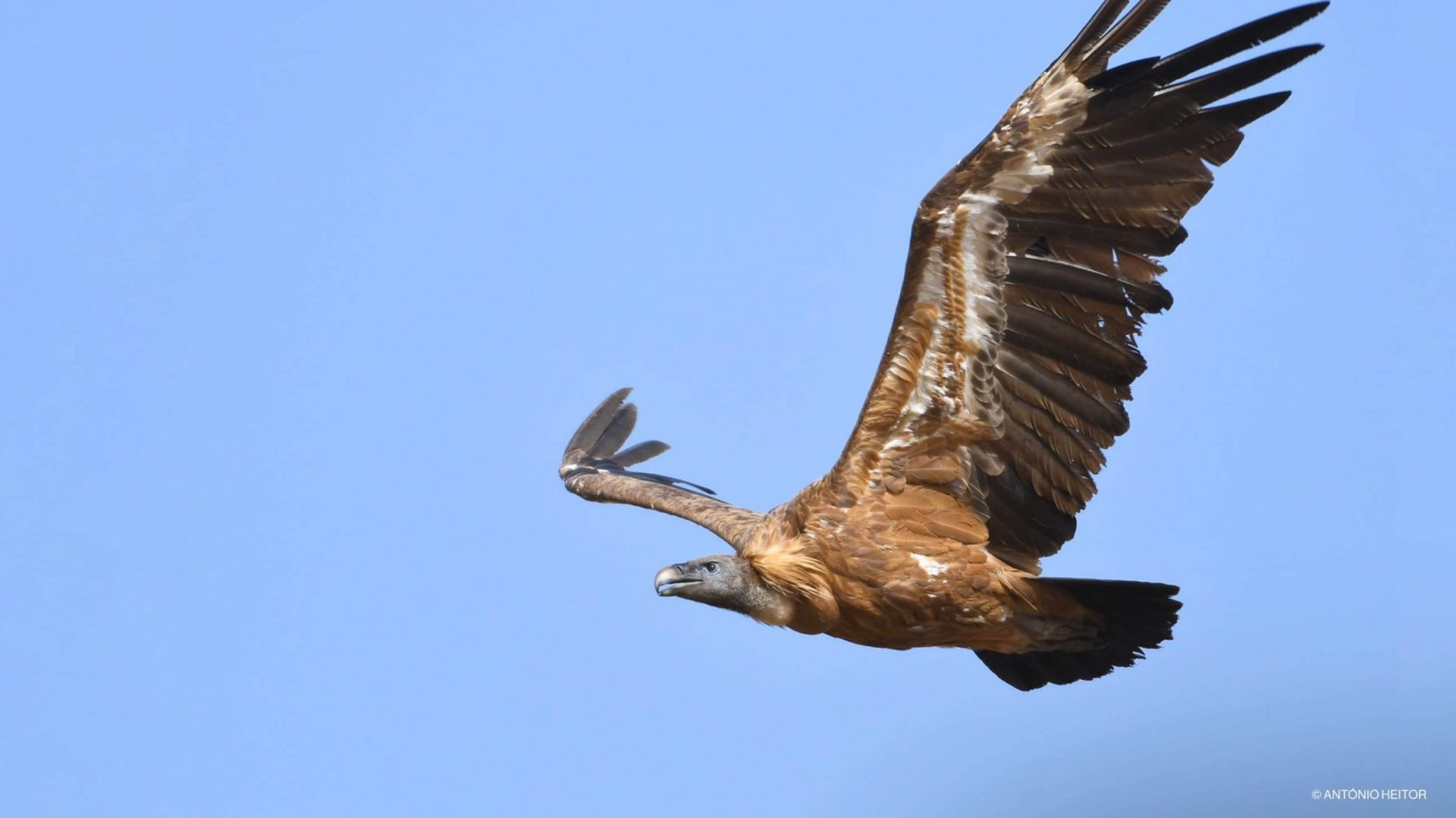With a wingspan of almost 3 metres, the griffon vulture is one of the largest birds that can be found in Portugal. However, this species of vulture does not only stand out because of its size, but above all because of the “sanitary” function it performs in ecosystems.
In the same way that the people who dispose of our waste are essential to society, the griffon vulture (Gyps fulvus) also plays an indispensable role in ecosystems. It is a necrophagous species, a word which comes from the Greek nekrofágos, meaning that which feeds on corpses, and it lives off the carcasses of mammals (wild mammals, but also livestock). By consuming them, it helps them decompose and prevents the spread of disease.
Like all birds of prey, the griffon vulture is equipped with the appropriate tools needed to carry out its tasks: strong, sharp claws, used to hold its food, and a sharp, powerful beak with which it can tear through even the toughest of skins. Its long, featherless neck seems to have been designed to facilitate access to the inside of carcasses in search of food (which includes muscles and viscera). It also has telescopic eyes, which are capable of locating a corpse from a height of more than 300 metres.
The griffon vulture is also known as the Eurasian griffon vulture and is covered by a bicoloured plumage. While most of its body is light brown (golden, from which some common names in Portuguese are derived), its tail and the back of its wings are dark brown. As a result, its brownish colour contrasts with a characteristic white collar in adults and with its light-coloured neck and head.
Its wide and long wingspan can reach 2.7 metres and, when it is in flight, large feathers stick out at the ends, which reduce turbulence at the tip of its wings and increase lift, reducing energy consumption in flight. These characteristics make it a remarkable glider, capable of covering great distances—over 100 km in a single day—almost without flapping its wings. However, these trips, which require little energy, cannot be made at any time. They can only take place when the sun is high in the sky and when its rays are heating up the atmosphere, creating thermal updraughts that lift the griffon vulture into the air. This assistance is invaluable as they can weigh up to 11 kg.
This majestic bird forms colonies and it is in these groups that it reproduces. It builds its nests mainly in the rocky escarpments of steep river valleys, as is the case in the stretches of the Douro and Tagus rivers that straddle the border between Portugal and Spain, as well as their tributaries. There are still some mating pairs on the rocky ridges of Vila Velha de Ródão and Proença-a-Nova and in the mountains of Penha Garcia, Malcata, and São Mamede. Above all, they are found close to Portugal’s border with Spain.





